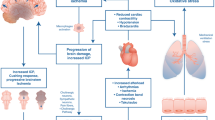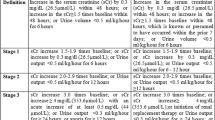Abstract
Orthotopic liver transplantation has emerged as the standard treatment for end-stage liver disease. In the United States, the number of listed patients has tripled in the last two decades. Organ availability during the same period has plateaued at approximately 6000 grafts annually, resulting in a fivefold increase in wait-list mortality. The problem is not specific to the United States; European and Asian registries report similar shortages. Donor pool expansion strategies such as the use of living donors, cadaveric split livers, and “extended criteria donors”; (ECD) are being pursued. Used judiciously, ECD grafts provide an opportunity for addressing the shortage. Although there is no universally accepted definition of ECD, the term generally refers to donor factors predisposing recipients to poor initial graft function and/or increased long-term risk. These factors include advanced donor age, hypernatremia, prolonged warm ischemic time, pressor requirement, and donation after cardiac death. The transplant community is scrutinizing all factors to evaluate the degree of risk they impart on the recipient and the extent to which grafts can be “matched”; to maintain acceptable outcomes. We review the importance of selected factors and the impact of a “matching”; strategy to minimize recipient risk while optimizing graft use.
Similar content being viewed by others
References
Ikegami T, Sanchez EQ, Uemura T, Narasimhan G, Masannat O, Chinnakotla S, et al. Liver transplantation for cystic fibrosis in adults. Surg Today 2008;38:26–29.
Koffron A, Stein JA. Liver transplantation: indications, pretransplant evaluation, surgery, and posttransplant complications. Med Clin North Am 2008;92(4):861–888.
Ghabril M, Dickson RC, Machicao VI, Aranda-Michel J, Keaveny A, Rosser B, et al. Liver transplantation of patients with hepatitis C infection is associated with acceptable patient and graft survival. Liver Transpl 2007;13(2):1717–1727.
Harper AM, Baker AS. The UNOS OPTN waiting list: 1985–1995. Clin Transpl 1995:69–84.
Organ Procurement and Transplantation Network and Scientific Registry of Transplant Recipients. Annual Reports. Available at www.optn.org. Accessed April 2008.
Rull R, Vidal O, Momblan D, González FX, López-Baodo MA, Fuster J, et al. Evaluation of potential liver donors: limits imposed by donor variables in liver transplantation. Liver Transpl 2003;9(4):389–393.
Ploeg RJ, D’Alessandro AM, Knechtle SJ, Stegall MD, Pirsch JD, Hoffmann RM, et al. Risk factors for primary dysfunction after liver transplantation — a multivariate analysis. Transplantation 1993;55(4):807–813.
Greig PD, Forster J, Superina RA, Strasberg SM, Mohamed M, Blendis LM, et al. Donor-specific factors predict graft function following liver transplantation. Transplant Proc 1990;22(4):2072–2073.
Le Couteaur DG, McLean AJ. The aging liver; drug clearance and an oxygen diffusion barrier hypothesis. Clin Pharmacokinet 1998:34:359–373.
Yersiz H, Shaked A, Olthoff K, Imagawa D, Shackleton C, Martin P, et al. Correlation between donor age and the pattern of liver graft recovery after transplantation. Transplantation 1995;60(8):790–794.
Emre S, Schwartz ME, Altaca G, Sethi P, Fiel MI, Guy SR, et al. Safe use of hepatic allografts from donors older than 70 years. Transplantation 1996;62(1):62–65.
Ikegami T, Nishizaki T, Yanaga K, Shimada M, Kishikawa K, Nomoto K, et al. The impact of donor age on living donor transplantation. Transplantation 2000;70(12):1703–1707.
Grande L, Rull A, Rimola A, Garcia-Valdecasas JC, Manvalic M, Cabrer C, et al. Outcome of patients undergoing orthotopic liver transplantation with elderly donors (over 60 years). Transplant Proc 1997;29(8):3289–3290.
Cameron AM, Ghobrial RM, Hiatt JR, Carmody IC, Gordon SA, Farmer DG, et al. Effect of nonviral factors on hepatitis C recurrence after liver transplantation. Ann Surg 2006;244(4):563–571.
Clark JM. The epidemiology of nonalcoholic fatty liver disease in adults. J Clin Gasteroenterol 2006;40(3 suppl 1):S5–10.
Portman B, Wight DGD. Pathology of liver transplantation (excluding rejection). In: Calne R, editor. Liver transplantation. Orlando, FL: Grune & Stratton; 1987. p. 437.
Reddy JK, Rao MS. Lipid metabolism and inflammation. II. Fatty liver disease and fatty acid oxidation. Am J Physiol Gastrointest Liver Physiol 2006;290:G852–G858.
Verran D, Kusyk T, Painter D, Fisher J, Koorey D, Strasser S, et al. Clinical experience gained fro the use of 120 steatotic donor livers for orthotopic liver transplantation. Liver Transpl 2003;9(5):500–505.
Salizzoni M, Franchello A, Zamboni F, Ricchiuti A, Cocchis D, Fop F, et al. Marginal grafts: finding the correct treatment for fatty livers. Transplant Int 2003;16(7):486–493.
Mateo R, Cho Y, Singh G, Stapfer M, Donovan J, Kahn J, et al. Risk factors for graft survival after liver transplantation from donation after cardiac death donors: an analysis of OPTN/UNOS Data. Am J Transplant 2006;6(4):791–796.
Testa G, Goldstein RM, Netto G, Abbasoglu O, Brooks BK, Levy MF, et al. Long-term outcome of patients transplanted with liver from hepatitis C-positive donors. Transplantation 1998;65(7):925–929.
Saab S, Ghobrial RM, Ibrahim AB, Kunder G, Durazo F, Han S, et al. Hepatitis C positive grafts may be used in orthotopic liver transplantation: a matched analysis. Am J Transplant 2003;3(9):1167–1172.
Peek R, Reddy KR. Hepatitis C virus-infected donors in liver transplantation. Gastroenterology 2007;133(2):381–382.
Gish RG, Ascher NL. Transmission of hepatitis B virus through allotransplantation. Liver Transpl Surg 1996;2(2):161–164.
Dodson SF, Issa S, Araya V, Gayowski T, Pinna A, Eghtesad B, et al. Infectivity of hepatic allografts with antibodies to hepatitis B virus. Transplantation 1997;64(11):1582–1584.
Anselmo DM, Ghobrial RM, Jung LC, Weaver M, Cao C, Saab S, et al. New era of liver transplantation for hepatitis B: a 17-year single-center experience. Ann Surg 2002;235(5):611–619; discussion 619–20.
Cameron AM, Ghobrial RM, Yersiz H, Farmer DG, Lipshutz GS, Gordon SA, et al. Optimal utilization of donor grafts with extended criteria: a single-center experience in over 1000 liver transplants. Ann Surg 2006;243(6):748–753.
Author information
Authors and Affiliations
Rights and permissions
About this article
Cite this article
Gordon Burroughs, S., Busuttil, R.W. Optimal utilization of extended hepatic grafts. Surg Today 39, 746–751 (2009). https://doi.org/10.1007/s00595-008-4022-1
Received:
Accepted:
Published:
Issue Date:
DOI: https://doi.org/10.1007/s00595-008-4022-1




